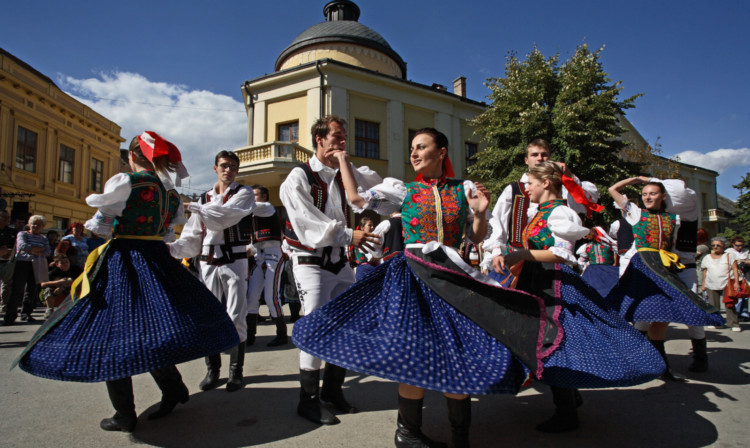
Get to know a Balkan delight with a holiday in Serbia.
Few places in Europe remain undiscovered for long think of the rise of Prague, or the Croatian coastline. In the last 20 years, both have become tourist hotspots.
But if you fancy somewhere that’s still off-the-beaten-track, one corner of the continent that remains largely unknown to British travellers is Serbia.
Serbia, like much of the Balkans, was a patchwork of conflict zones for periods of the 1990s and tourism there was almost unthinkable. Over a decade later though, Serbians are keen to look forward and welcome tourists to visit their country.
In Belgrade, ancient city and capital of Serbia, locals tell you with a degree of both pride and regret of how their city has been attacked, destroyed, conquered and settled by numerous armies and powers over the centuries, but has always recovered.
The Kalemegdan Fortress exists today largely in the form of the 17th Century construction by the Ottomans, sitting atop a hill overlooking the confluence of the Sava and the Danube rivers, but at one time or another Romans, Bulgarians, Byzantines and Austrians have all occupied this strategic patch of land.
Wandering round the battlements and the adjacent park, with its superb views over the cityscape and its military monuments in various languages from down the centuries, is a good way to get an initial sense of Belgrade’s complex history and its role as the crossroads between Central Europe and the Balkans.
Head into the city centre and it has a certain shabby-chic feel to it smart, pedestrianised streets buzzing with caf and restaurant life sit alongside graffiti, all manner of buskers, and winding side alleys.
Skadarlija, the city’s charming, old bohemian quarter, has numerous stylish spots, such as Club Basta, where you must sample some Rakia, a fruit-based liquor of the region that can vary in strength depending on who brewed up the batch.
Serbian cuisine is typically quite heavy and rustic.
For an authentic dining experience, complete with live band and dancing, head to Reka, a fish restaurant in the north west of the city on the banks of the Danube, where locals will happily teach you a few dance steps after your meal.
Originally opened in 1957 during the rule of Tito and renovated in 2012, the Metropol Palace is Belgrade’s premier hotel and is a well situated base from which to explore the city.
On a grander scale, the Cathedral of Saint Sava is the largest Orthodox Church in the world and, though the interior decoration remains unfinished, its scale is impressive enough to merit a visit.
At the other end of the spectrum, the Serbian countryside contains a number of small but captivating monasteries dating from the Middle Ages, decorated with frescoes and icons in the Slavic Christian tradition.
Most are still functioning, so a degree of modesty is required when visiting, but they are willing to receive tourists.
I visited the Pustinja Monastery in the centre of the country, but Mileeva in south-west Serbia contains the jewel of these monuments’ treasures, the White Angel fresco dating from 1235.
Approximately four hours’ drive south-west of Belgrade is the Zlatibor District (nearly all of this region’s road network is single-lane going off the beaten track generally isn’t easy), home of the Tara Mountain National Park, where the River Drina winds its way through spectacular, rugged landscapes that form the border with Bosnia.
There are plenty hiking and biking routes here through pine forests and up mountains at similar altitudes to the Highlands, though you’ll have a better chance of summer sunshine here.
You’ll need car hire to properly explore this region, but if you’re confident driving on the “other side”, you’ll be fine. This area is also home to the argan Mountain Railway.
Constructed during the First World War it now takes passengers from the quaint village of Mokra Gora through mountain passes to the village of Drvengrad, built in the late 1990s as a film set for Cannes Award-winning Serbian director Emir Kusturica’s film, Life is a Miracle.
Designed to look like a traditional Serbian village and home to an annual film festival, it is unfortunately too touristy and kitsch to be of much interest for long, but the train journey provides great views.
If you’re still keen on seeing a slice of traditional, rural Serbian life, the open air village museum in Sirogojno captures a better essence of how life here would have looked centuries ago.
Arriving on a Saturday, I was lucky enough to also see wedding celebrations going on outside the village church, complete with a Balkan brass band, dancing revellers and plenty of Rakia.
The Zeleni Cardaci lodges offer wooden, Alpine-style chalets in the heart of the Park, a suitably pastoral setting for your time in this remote region, and serves hearty grub that will satisfy the most voracious of appetites after a day in the hills.
Serbia is currently negotiating EU entry for the near future, and once that comes about, the country will likely experience a noticeable transition. Now is a fascinating time to visit a country that will reward tourists willing to make the effort.
If you want somewhere a bit undiscovered and “different”, this is for you.
For more information, go to Serbia.travel. JAT Airways fly Heathrow to Belgrade direct daily.
For info on great holiday lodges in Tara Mountain National Park, see zelenicardaci.net. The Hotel Metropol Belgrade is at metropolpalace.com.

Enjoy the convenience of having The Sunday Post delivered as a digital ePaper straight to your smartphone, tablet or computer.
Subscribe for only £5.49 a month and enjoy all the benefits of the printed paper as a digital replica.
Subscribe